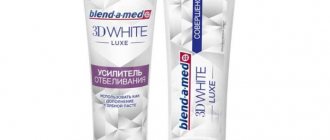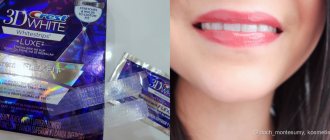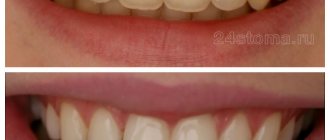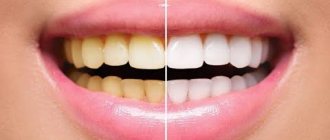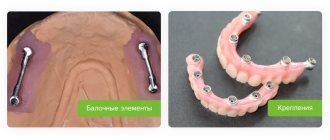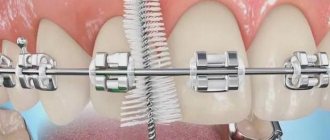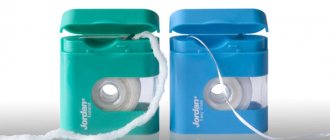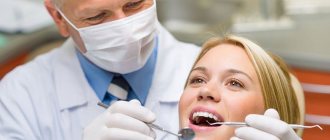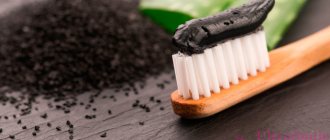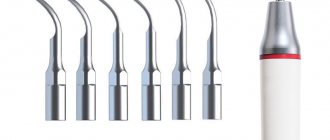Treatment of malocclusion is one of the most popular services in the dental department of the CELT clinic. Advanced orthodontic technologies used by our specialists are able to effectively correct dental anomalies. In case of minor malocclusions, our specialists use dental plates.
Having decided to install a dental plate, you will receive a removable or non-removable orthodontic system in the form of a metal arch with a plastic base made of hypoallergenic material. Its design provides for the presence of clamps. The purpose of the system is to apply gentle pressure and thus correct the dentition. To do this, it has a screw, which must be adjusted as you wear it. This approach allows you to increase the load on the dentition and apply more pressure.
Manufacturing of fixed and removable dental plates
carried out on an individual basis, and they themselves allow:
- adjust the position of the incisors;
- increase or decrease the width of the palate;
- adjust the shape of the jaw;
- accelerate or slow down jaw growth depending on the identified defects.
At CELT you can get advice from a dental specialist.
- The cost of an orthodontist consultation is 2,000
Make an appointment
Indications
In the vast majority of cases, dental plates are used to correct teeth in children under the age of twelve. It is during this period that intensive development of the jaws occurs, due to which the treatment will be as effective as possible. During this period, indications for use are:
- malocclusion;
- incorrect position of teeth;
- crowding or large spaces between teeth;
- too slow or, on the contrary, intense jaw growth.
Plates for teeth
It is also used for treatment in
adults
. In this case, the indications are as follows:
- maintaining the results of orthodontic treatment using braces;
- insignificant alignment of teeth within the dentition.
It is worth noting that competent and timely use of dental plates in childhood gives excellent results - and this despite the fact that its price is much lower than braces! This is why we recommend that parents seek treatment on time: you will not only save money, but also eliminate discomfort for your children (after all, plates are not as noticeable on the teeth as braces).
Contraindications
Orthodontic plates have a minimum of contraindications. So, the absolute ones relate to the following:
- individual intolerance to the materials from which structural elements are made;
- dental periodontal disease, in which there is atrophy of bone tissue and a decrease in the height of the interdental septa;
- diseases of the respiratory system.
There are also relative contraindications. These are carious lesions of the teeth: before applying the plates, they must be eliminated.
Types of plates for teeth
There are two types of bite correction plates:
- Non-removable - fixed on the outer surface of the teeth. Their design includes a system of locks, through each of which a steel arc is threaded. The latter, restoring its original shape, sets the teeth in the required direction of movement. The time it takes to correct teeth with a non-removable plate is about two years, and the treatment method itself can be used for both children and adults;
- Removable ones have a simpler design compared to non-removable ones. They are made from plastics that are non-toxic to the human body. They are fixed to the teeth using metal hooks. In addition, their design may include auxiliary screws and springs. Removable teeth straightening plates can be removed while eating or brushing your teeth. The period of wearing them varies from one and a half to two years and is determined by the doctor.
Fixed dental plates, the price of which is significantly higher than their removable counterparts, are rightfully considered more effective. The choice of type depends on the complexity of the case.
In addition, classification is carried out based on the purpose of application. The types of plates are presented in the table below:
| Type of plates | What is it used for? | Peculiarities |
| Mechanical | Optimal for correcting crooked teeth and helping to straighten them. | They have clasps, arches and screws made of metal. |
| Equipped with a hand-shaped process | Allows you to correct an individual tooth. | The design is such that it allows you to apply pressure to one specific tooth. |
| Functional | They stimulate the development of the jaw and chewing muscles, allow you to restore facial muscles and even correct the shape of the face due to the restructuring of the dentition and the regulation of the temporomandibular joints. | Requires wearing for 14 hours a day. They fix the jaw in one position and are complex structures, when worn, the child cannot eat or speak. |
| Single jawed | Used to correct anomalies of individual teeth on one jaw. | The design includes special screws |
| Vestibular | They allow you to remove the soft tissue that has formed between the teeth by moving it away. | They are placed between the teeth and lips or between the teeth and cheek, depending on the location of the abnormal area. |
| With retraction type arc | Effective in straightening front teeth. | The plate is installed in such a way that it covers the teeth from the outside. |
| With arc with active pusher | Used to correct the palatal position of the upper teeth. | The arc has a base made of hypoallergenic plastic and a spring. |
Interdental space
One of the problem areas of the oral cavity is the interdental space, so dentists of all specializations pay maximum attention to this area. Damage to this anatomical area can lead to the formation of caries on the proximal surfaces of the tooth, the treatment of which is the responsibility of the dentist. Periodontists also encounter difficulties in proper hygiene of the interdental zone in patients, and it is difficult for orthopedists to model the contact point. Regular toothpaste and brush cannot provide the necessary care for this area. Therefore, many people suffer from caries of contact surfaces from an early age, when the teeth are still baby, and in adulthood, when the molars are already exposed to caries.
What hygiene products are available for cleaning interdental spaces?
Interdental spaces require special care with the help of interdental oral hygiene products: toothpicks, floss, tapes and flossettes.
Toothpicks are available in plastic, wood and bone china. The most common toothpicks are made of soft wood or polymers. The sharp, cone-shaped edge follows the space between the teeth, making it easy to remove stuck food without damaging the gums.
Dental floss for the hygiene of contact surfaces of teeth has another name - dental floss. This is a very popular remedy for maintaining oral health. It is made from single-fiber, heavy-duty material, coated with a semi-liquid paraffin composition, temperature above 50°C. Then the thread is cooled and given the desired shape. To flavor the thread, an additional paraffin layer is applied to the fiber, the melting degree of which is lower than the first.
Tape (tare) is a wide floss that is approximately 5 times wider than the fiber of dental floss. The tape is made specifically for people with large interdental spaces and for those who have just started using such hygiene products.
Superfloss was created specifically for cleaning the interdental space, as well as for the hygiene of orthodontic systems. It has 3 functional parts: first a hard fiber part for quickly inserting floss under or between the structure, then a nylon space for removing food debris and plaque, and the last one is a standard floss. According to the results of clinical studies, the use of superfloss is 60% more effective than regular dental floss.
A toothbrush for contact areas of teeth (interdental toothbrush) is an analogue of a regular toothbrush with the only difference being the size, number of tufts and the shape of the brush area. There are three types of haircuts with single-tuft or mono-tuft brushes:
- flat to one level;
- cone-shaped in several levels;
- multi-level in the form of a truncated cone.
A low-tuft toothbrush typically has at least 6–7 tufts of bristles. The basis of the bristles is nylon fiber.
Another means of hygiene for the proximal surface of the tooth is toothbrushes . Their handle is completely identical to regular toothbrushes, but the brush itself is made of twisted wire with short bristles.
Which cleaning product should you choose?
Despite such a wide variety of oral hygiene methods, classic dental floss occupies a leading position in popularity. There are three types of floss:
- with microcrystalline wax (paraffin) or fluorine wax (waxed);
- without wax (unwaxed), but with a weak wax impregnation;
- with wax and menthol shock absorber (mint waxed), etc.
Some flosses are designed specifically for the hygiene of orthodontic and orthopedic structures.
Dental floss comes in small plastic boxes that easily fit into a woman’s purse or pocket. The meter of the thread can be from 18 to 50 meters. Such packaging is economical and easy to use, so a person can use floss at any time necessary.
To quickly restore the pH balance of the oral cavity after eating, it is recommended to use a floss containing fluoride components, usually sodium fluoride. But to maintain the cleanliness and hygiene of the interdental space, it is better to clean these areas with a toothpick with a triangular tip, and only then use dental floss.
Dental plates for children
Having looked at the photos before and after wearing dental plates on children’s teeth, you will conclude that they are very effective - and you will be right. With the right approach, they can be called the best way to correct a number of malocclusions. Their use is advisable under the age of 12 years during active jaw growth. To correct serious anomalies, non-removable structures are used. If there is a slight curvature or prevention is required, removable plates are ideal. As already mentioned, the production of plates is carried out on an individual basis and requires taking impressions and making plaster models. It is very important that the surface relief of the gums and palate coincide exactly. To do this, a special adjustment is carried out, which takes no more than 10 minutes.
Are there any difficulties?
According to reviews, dental plates are effective, but in the case of children there is one problem. It lies in the fact that you need to wear them at least 22 hours a day for 12 to 18 months. This does not always please young patients who are not delighted with the presence of a structure on their teeth, which requires getting used to and which may cause teeth pain at first.
It is important to explain to the child that plates are much less noticeable than braces, which will have to be worn if the plate does not give the desired effect... And to achieve the effect, you need to use it correctly. It is better to undergo a much simpler course of treatment now than to resort to much more complex treatment in adolescence - especially since the result will be obvious! The child needs to be taught:
- Wear the plate in the morning;
- Remove the plate to brush your teeth before going to bed;
- Do not remove the system during the day;
- Tighten the structure screw in a timely manner.
Benefits of Teeth Whitening Strips
Whitening strips are a unique solution for self-whitening teeth enamel at home. Most people have associated going to the dentist with pain and discomfort since childhood. If you look at the financial side of the issue, teeth whitening at home requires significantly less money than going to a dental clinic.
The main advantages of using whitening strips:
- the ability to carry out this procedure at home, while doing normal household chores;
- rapid achievement of results - the effect appears a few days after the start of bleaching;
- safety for tooth enamel and oral cavity;
- comparative durability of the effect – 6-12 months;
- painlessness – does not cause discomfort or unpleasant sensations;
- high availability and low cost.
Manufacturing and design features
Making plates to correct a bite is not an easy process, requiring a preliminary x-ray examination of the dentition. In addition, it is preceded by taking impressions and making control models. By conducting a preliminary assessment using them, the orthodontist decides how accurate the model is and whether it is suitable for the patient. If necessary, correction and re-fitting are carried out.
Plastic is used to make the base of the plate. The shape of the base exactly repeats the relief of the dental contour and gum surface. The base itself is durable and moderately rigid. The arc of the plate is made of steel wire and has hooks that are fixed on the cutters. As the position of the teeth changes and the jaw grows (when it comes to a child), the system is corrected.
Braces
This is a non-removable orthodontic system, which is especially relevant for severe bite defects. A lock is attached to each tooth on the outside or inside, depending on the type of braces, and they are connected to each other with arches. This puts constant pressure on the teeth, which forces them to change position, and the bite is corrected. Only a doctor can install, adjust or remove braces.
Braces consist of clasps and arches - the first are fixed on the teeth, the second connect them together
The brace system is a standard solution, so the doctor must conduct inspections quite often and manually adjust the direction of the arc. Mini-screws, elastic bands and silicone chains are often additionally used, which in themselves cause discomfort to patients. On average, treatment with braces takes from one to three years. After this, a consolidation period is required, when retention mouth guards are put on at night or permanent retainers are used - metal arches installed on the inner surface of the teeth.
While wearing braces, you need to visit an orthodontist for adjustments. On average, once every 3-4 weeks, the doctor changes the arches, which put pressure on the teeth.
The systems differ from each other in the method of fastening and material of manufacture. Thus, braces can be attached to the outside or inside of the teeth. In addition, they come in metal, ceramic or sapphire. In the first case, the locks are made of metal and are noticeable when worn. Ceramic ones are less visible on the teeth, since you can choose a color that is as close as possible to the shade of the enamel. Sapphire braces are made from synthetic clear sapphire and are less visible when worn.
Lingual braces are attached to the inside of the teeth, so they are visually invisible when worn.
Regardless of which treatment is chosen, the first step to correcting your bite is visiting your dentist. Make an appointment right now, and together we will select a correction system for you.
Benefits of orthodontic plates
Although bite plates are only effective for minor malocclusions, they have a number of other benefits:
- Convenient to use. The design of the plates allows you to easily and quickly remove them while eating or brushing your teeth;
- Prompt production. The average production time for plates is from 2 to 4 weeks. At the same time, a removable type structure is manufactured faster than a non-removable one;
- Affordable price. The average price of a plate for correcting a bite is 2 times lower than the price of inexpensive braces.
Aligners
These are transparent removable mouth guards made of hypoallergenic material, which are used to correct bite in children over 12 years of age and adults. Age restrictions are due to the fact that aligners can be prescribed when jaw growth has stopped, that is, after 12–14 years.
Aligners are clear aligners that are less noticeable when worn than a plate or braces.
Aligners are prescribed when there are gaps between teeth that spoil the aesthetic appearance. They also help solve the problem of crowded teeth, change the position or inclination of each tooth, and correct crossbites or open bites. In severe cases or in very difficult cases, this orthodontic system will not be sufficient and braces may be required.
Like plates, aligners are individual for each client. They are created using a 3D model, taking into account how the position of the teeth will change step by step. That is, if the doctor adjusts the plate according to the schedule, then the aligners will simply need to be changed every 2-4 weeks on your own. A set can on average include from 8 to 40 sets, depending on the complexity of the case. As a rule, the first results become noticeable after 3-4 months of wearing.
The client receives a full set of aligners for the entire correction period
After treatment, a retention period begins, during which you need to consolidate the result with the help of retainers. If it is missed, the teeth may return to the position they were before treatment.
Aligners should be worn for 20–22 hours a day, only being removed when eating or brushing your teeth. The advantage of this device is that it does not impose dietary restrictions: for example, while wearing braces you cannot eat solid foods such as nuts, crackers, apples.
Russian Star Smile aligners have made the technology of orthodontic treatment with aligners accessible, since the final cost does not include transportation costs from abroad. In addition, their production time is reduced. The treatment process takes on average from 3 to 15 months.
What are the disadvantages of dental plates?
The use of records has a number of limitations. First of all, they are due to the fact that the functionality of the plates does not allow them to move teeth. It only makes it possible to hold them in a certain position, which does not allow them to be used to correct serious anomalies. At the same time, it is worth noting that often the reason for the insufficient effectiveness of treatment is a reduction in the time of wearing the structure. As for other disadvantages, these include:
- the need for long-term use;
- a number of uncomfortable sensations during adaptation;
- minimal pressure compared to braces;
- age restrictions for use;
- the need for constant monitoring by parents (in the case of children).
Installation of plates
Installing the plates is a fairly quick, painless process that takes no more than 10 minutes. Most of the time is spent on final adjustment of the system. That is why the first installation of removable plates is carried out in the presence of the attending physician. The doctor will give detailed instructions on the rules for its use, care and how to properly regulate the tension of the arc. The first correction is carried out after the appearance of a visible result - it is this that determines the subsequent course of treatment and its duration. It is important to understand that at first the plate will be perceived as a foreign body in the mouth, which can cause discomfort, impaired diction and increased salivation. The adjustment period averages up to one week; after this the structure ceases to be felt.
How to care for the plates?
In order for the plate to serve the required time and not break, it is necessary to provide it with appropriate care. It is as follows:
- brushing with toothpaste every day;
- disinfection every week;
- storage in a special container, closed;
- oiling the screw;
- removing the plate while eating, brushing teeth, practicing martial arts, boxing and water sports.
Do you dream of beautiful teeth? Contact the orthodontists of the multidisciplinary clinic CELT!
Make an appointment through the application or by calling +7 +7 We work every day:
- Monday—Friday: 8.00—20.00
- Saturday: 8.00–18.00
- Sunday is a day off
The nearest metro and MCC stations to the clinic:
- Highway of Enthusiasts or Perovo
- Partisan
- Enthusiast Highway
Driving directions
Cleaning the Removable Retainer
- Use a brush
It is recommended to clean the device twice a day, while brushing your teeth:
- remove the plate;
- rinse under running water;
- squeeze a small amount of paste onto the brush, carefully clean the plate;
- rinse the structure, then place it in the mouth or place it in a container.
- Use a cleanser
From time to time you need to soak the device in a special cleaning composition.
For these purposes, the doctor may prescribe:
- mouthwash or plate cleaning tablets;
- baking soda solution (2 teaspoons of powder in a small container of cool water).
Reference! It is not recommended to use vinegar, as it has an aggressive effect on metal and plastic structural elements.
- Avoid drying out
The retainer is designed to constantly remain in the mouth with moist microflora. If you remove the device, place it in liquid - this will avoid drying out and destruction:
- take water at room temperature into a small container and place the plate there (distilled water that does not contain harmful impurities and has a normal acid-base balance is suitable for these purposes).
